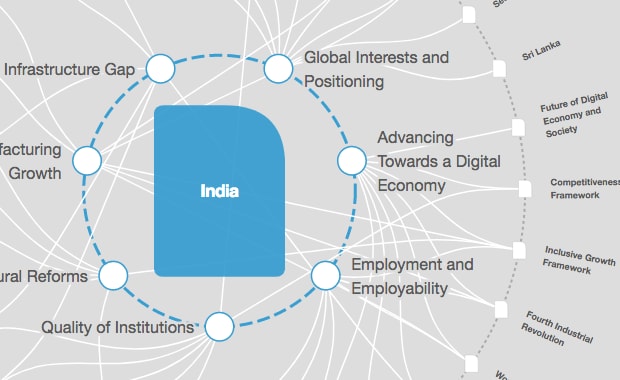Is this India’s next public health victory?

If a stranger knocked on your door and offered you a pill, the likelihood of you taking it would be slim to none.
In India, this is a common occurrence. Year after year, as part of a mass drug administration (MDA), people living in the poorest communities of the country are given medicine to treat and prevent chronic, debilitating infections known as neglected tropical diseases (NTDs). But public participation rates in MDAs continue to fall short, driven in part by low disease awareness and risk perceptions among the general public and a suspicion of government drug distribution programs.
One NTD in particular remains a major challenge for India: lymphatic filariasis (LF), also known as elephantiasis or filaria. It causes extreme pain, disabling and disfiguring all those infected.
Nearly half of India’s population is at risk of contracting LF. However, prevention is so easy that it’s possible for India to eliminate LF within the next few years. And the government has recently stepped up its efforts to do just that, launching the largest MDA in the world to provide LF treatments to nearly 460 million people in 17 Indian states.
But medicine only works if people are willing to take it. So in October 2014, the Indian Ministry of Health & Family Welfare (MOHFW) launched a communications campaign known as “Hathipaon Mukt Bharat” (Filiaria Free India). To support the campaign, the MOHFW asked the Global Network for Neglected Tropical Diseases, an initiative of the Sabin Vaccine Institute, to develop creative communications materials.
Working with the MOHFW and other partners, we produced three television and cinema videos in 10 languages, along with radio, print, mobile phone and online spots products. We knew that not only did we have to build awareness around LF, but we also had to create a sense of shared purpose and inspiration. Audiences respond much more strongly to positive stories, so while LF is a terrible disease, we had to create an uplifting narrative. And we had to hold the audience’s attention long enough for the message to sink in.
Take a minute to watch the result:
We chose to build a story around how a group of children lead a community to discover an unexpected source of education and inspiration for LF prevention: a charismatic visitor with a severe form of the disease. The campaign emphasizes an uplifting, simple message: the pills are free and safe, and, if everyone works together and consumes their dose of the pills, India can eliminate LF.
Other key messaging highlights the irreversible nature of advanced LF and the simplicity of its prevention, with the LF patient delivering the most important message himself: this disease can happen to anyone. Social stigma is a major concern for those with LF, so we thought it was important that the man stricken with LF in the videos serve as a champion for treatment and action, rather than a helpless victim.
Lastly, given the regional language challenges, we created a musical score based on traditional Sanskrit lyrics. The lyrics translate as:
Every sign or indication leads us to the path of knowledge.
And the journey across that path of knowledge leads us to absolute truth.
Preliminary results indicate that there was broad recognition of the video spots, and participation was strong in the MDA campaign that immediately followed the outreach.
Nearly 200,000 health workers in 14 states were involved with the initial campaign drive, reaching more than 300 million people. Subsequent MDAs are being implemented in three other states in 2015. The goal now is for the MOHFW to continue placing advertising in target areas ahead of each drug distribution and to work with state governments to increase promotion and participation in the campaign.
As a testament to the campaign’s innovative approach, “Hathipaon Mukt Bharat” was recently awarded a Silver Lion at the Cannes Lions International Festival of Creativity.
This article is published in collaboration with the Bill & Melinda Gates Foundation. Publication does not imply endorsement of views by the World Economic Forum.
To keep up with the Agenda subscribe to our weekly newsletter.
Author: Richard Hatzfeld is the communications director at the Sabin Vaccine Institute and oversees all communications activities related to Sabin’s vaccine development and advocacy efforts, as well as the Global Network for Neglected Tropical Diseases and its END7 Campaign.
Image: Pharmaceutical tablets and capsules in foil strips are arranged on a table in this picture illustration taken in Ljubljana September 18, 2013. REUTERS/Srdjan Zivulovic.
Don't miss any update on this topic
Create a free account and access your personalized content collection with our latest publications and analyses.
License and Republishing
World Economic Forum articles may be republished in accordance with the Creative Commons Attribution-NonCommercial-NoDerivatives 4.0 International Public License, and in accordance with our Terms of Use.
The views expressed in this article are those of the author alone and not the World Economic Forum.
Stay up to date:
Future of Global Health and Healthcare
Forum Stories newsletter
Bringing you weekly curated insights and analysis on the global issues that matter.
More on Geographies in DepthSee all
Braz Baracuhy
December 19, 2024






